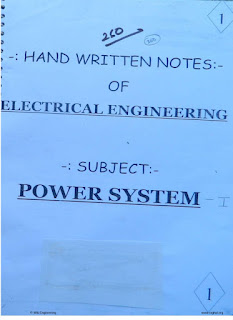Ports
A port is basically an interface between the computer and the output devices like printer, speakers, mouse, etc. Besides, it can be of many types like PS/2 port, serial port, parallel port, USB Port, etc. Moreover, we know that the processing speed of the CPU and memory is much faster than the input/output devices. Hence, it is important to take care that the data lines do not engage for a long time else it can affect the overall performance. Therefore, we connect these devices through the ports.
Characteristics of Computer Ports
- We use the ports to connect external devices like printers, USB, speakers, etc.
- Ports in other words are slots on the motherboard to which we connect the external devices.
Types of Ports
The ports are of different types as follows:
- Serial Port
- Parallel Port
- PS/2 Port
- USB Port
- VGA Port
- Game Port
- Modem Port etc.
Let us study the PS/2 port in detail.
PS-2 Port
A PS/2 port is a mini DIN connector that connects the mouse or keyboard to the computer system. Besides accepts 6-pin plug. IBM introduced it in 1987. Moreover, its full form is Personal System/2. Nowadays, computers use the USB port for the keyboard and mouse.
Characteristics of a PS/2 port
Characteristics of a PS/2 port are as follows:
- This port was used earlier for connecting the mouse and keyboard.
- We can also call it mouse port.
- Some areas still use this port for security reasons.
- Usually, this port uses a color scheme that is, purple for the keyboard and teal green for the mouse.
- No restrictions on key rollover.

PS/2 Port Pins
The 6 pins have their own different functions. Besides, they have different voltages, these are as follows:
| Voltage | Assignment | |
| 1 | +2.0 to +5.5v | Keyboard Data |
| 2 | +4.8 to +5.5v | Reserved |
| 3 | Ground | Ground |
| 4 | +2.0 to +5.5v | +5.0V DC |
| 5 | +2.0 to +5.5v | Keyboard Clock |
| 6 | +2.0 to +5.5v | Reserved |
Other Important Ports
Some other important ports like serial port, parallel port, USB port are as follows:
Serial Port
A serial port carries out a serial communication interface and can transfer only one bit at a time. Moreover, it generally denotes RA-232 or other related standards like RS-422, RS-485, etc. Besides, these ports are usually present on the back of the computer and are part of the motherboard. Furthermore, we can identify this port from a D shape with usually 9 pins. It is one of the oldest types of interfaces.
Parallel Port
In contrast to the serial port, parallel ports perform a parallel communication interface. Moreover, it can transfer multiple bits at a time. Besides they also connect devices like printers and scanners. We can also call them printer port. Furthermore, they contain 25 pins, and the speed of data travel is 150-kilo bits per second.
USB (Universal Serial Bus) Port
The USB port is the standard interface for connecting the computer to external devices like printer, camera, keyboard, speaker, etc. Besides, we can say that it is an industry-standard for short-distance digital data communication.
Frequently Asked Questions (FAQs)
Q1. What are ports?
A1. A port is basically an interface between the computer and the output devices like printer, speakers, mouse, etc. Besides, it can be of many types like serial port, parallel port, USB Port, etc.
Q2. What is a PS/2 port?
A2. A PS/2 port is a mini DIN connector that connects the mouse or keyboard to the computer system. Besides accepts 6-pin plug. IBM introduced it in 1987. Moreover, its full form is Personal System/2.
Q3. What is the other name of a PS/2 port?
A3. We can also call it the mouse port.
Q4. What is the difference between a serial and a parallel port?
A4. The main difference is that a serial port provides serial data transmission while a parallel port provides parallel data transmission.
Read More
- What is Microprocessor and Types of Microprocessor
- What is Assembler and What is Assembly Language
- What is Utility Software and Types of Utility Software
- Office Tools and Functions of Office Tools
- What are Domain Specific Tools and Examples of Domain Specific Tools
- ASCII Definition, Use, Types, Unicode
- UNICODE Definition, Types, Uses, Advantages, Importance
- What is Memory in Computer Science Parts of Memory


